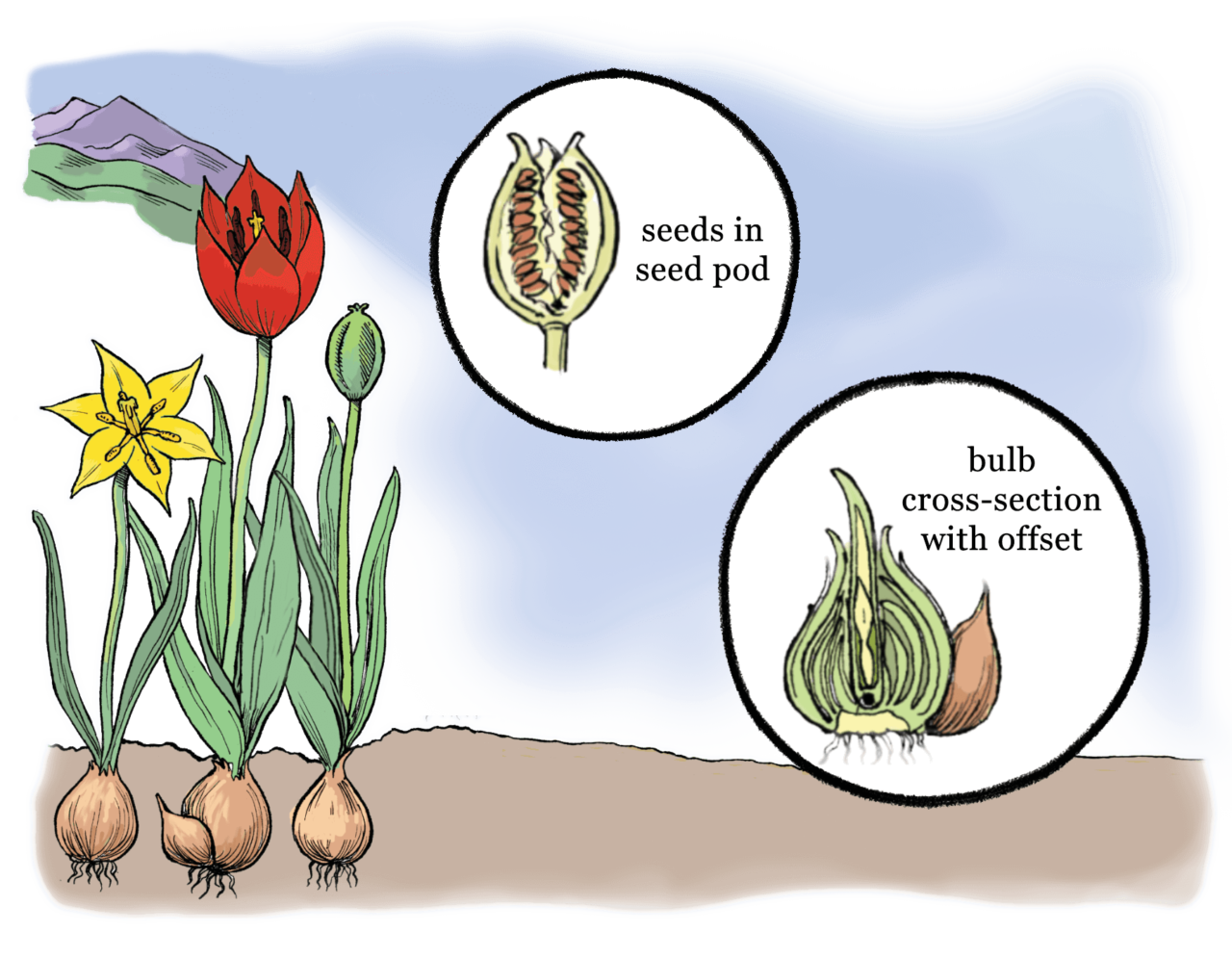The Netherlands is world famous for its vibrant fields of tulips in springtime. But those dazzling displays don’t happen by accident. Tulip bulb production is a complex process that starts long before the first sprouts emerge.
Planting Tulip Bulbs
Tulip bulb production begins in the fall when bulbs are planted in prepared fields
-
Fields are plowed and nutrient-rich fertilizers and compost worked into the soil to nourish bulbs
-
Bulbs are planted 4-6 inches deep using specialized agricultural equipment, This protects bulbs from frost and winter weather,
-
After planting, fields are covered with straw mulch to further insulate bulbs through winter dormancy.
-
Bulbs require a period of cool temperatures around 40°F to initiate root and shoot growth. The winter chilling period lasts 12-14 weeks.
Tulip Growth Phase
As soil warms in spring, dramatic growth begins:
-
Tulip shoots emerge from bulbs as early as March. Shoots appear as curled green/reddish sprouts.
-
Foliage grows rapidly, up to several inches per day. Staking may be needed for tall varieties.
-
Flower buds form and elongate into plump, colorful blooms in April-May.
-
During this growth phase, developing bulbs underground pull nutrients from soil, fertilizers, and leaves.
Removing Flowers for Bulb Growth
Here’s the surprising secret behind Dutch tulip fields:
-
Tulip flowers are cut off with machines just as they reach peak bloom. This prevents seed production.
-
Removing flowers tricks bulbs into focusing energy on developing new daughter bulbs rather than seeds.
-
By cutting flowers, the next year’s commercial crop is multiplied. Bulbs split into 2-5 new bulbs.
-
Cutting flowers also prevents bulbs from depleting stored nutrients. This maximizes bulb growth.
Tulip Bulb Harvest
Bulbs are harvested in summer once foliage dies back:
-
After 6-8 weeks of foliage growth, leaves yellow and wither as bulbs go dormant. This signals harvest time.
-
Bulbs are lifted from soil using specialized equipment designed not to damage bulbs.
-
Bulbs are cleaned of soil and roots and then sorted by size using machines.
-
Largest, healthiest bulbs are selected for replanting. Smaller bulbs become next year’s commercial crop.
-
Bulbs to be replanted are stored in a cool, dry spot until fall planting time.
-
Bulbs to be sold are cleaned, packaged and distributed to suppliers and consumers.
Off-Season Tulip Bulb Care
Proper storage and care is vital for producing robust bulbs year after year:
-
Before storage, bulbs are cured for 4-6 weeks in a dry, airy space to dry out skins and prepare for dormancy.
-
Cured bulbs are stored in mesh bags in a cool place around 50°F to prevent sprouting until fall planting.
-
While dormant, bulbs are monitored for disease and damage. Damaged or diseased bulbs are discarded.
-
Bulb fields are regularly tested and rotated to prevent nutrient depletion and disease buildup.
-
Nutrient levels and soil pH are carefully maintained through additions of compost, fertilizers, and pH adjusters like lime.
Through expert cultivation methods perfected over centuries, Dutch growers coax tulip bulbs into producing breath-taking displays year after year. It may seem like magic when colorful blooms burst forth each spring, but in reality it’s just skilled horticulture in action!
How 2 Billion Tulip Bulbs Are Produced and Harvested – Tulips Cultivation Technique in Green House
How do Tulips spread?
Tulips spread in two ways: by creating bulblets that sprout from the mother bulb underground and by seeds produced by flowers. The most common (and quicker method) is lifting the bulbs and dividing the offset bulbs (bulblets) attached to the mother bulb. This should be done in the fall, at the normal planting time for tulips.
Do tulips produce seeds?
Tulips are usually grown from bulbs, although the flowers do produce seeds. Botanical species set seeds worthy of collection, as they will produce a clone of the parent plant. However, it can take years for seeds to germinate, form bulbs, and produce flowers.
Why do tulip bulbs grow so deep?
When the bulb is planted deeper, it is less likely to try to produce bulbettes, similar to offspring of the flower. When the tulip produces these bulbettes, it takes all the energy from the main bulb, making it less likely to flower the next year since its nutrients are taken away.
Can tulips grow in a garden?
Thus, these spaces are excellent spaces for growing tulips and other spring bulbs. Tulips prefer rich, well-draining soil with a neutral pH to slightly acidic (6.0 to 7.0). Mixing in compost can improve drainage and provide nutrients to the bulbs. Ideally, do this before planting the bulbs.
- The Ultimate Guide to Growing Strawberries in Raised Beds - August 8, 2025
- No-Dig Garden Beds: The Easiest Way to Grow a Beautiful Garden - August 6, 2025
- How to Protect and Preserve Wood for Raised Garden Beds - August 6, 2025

